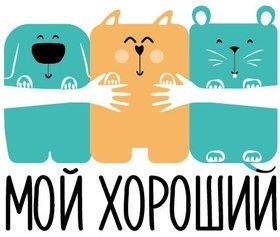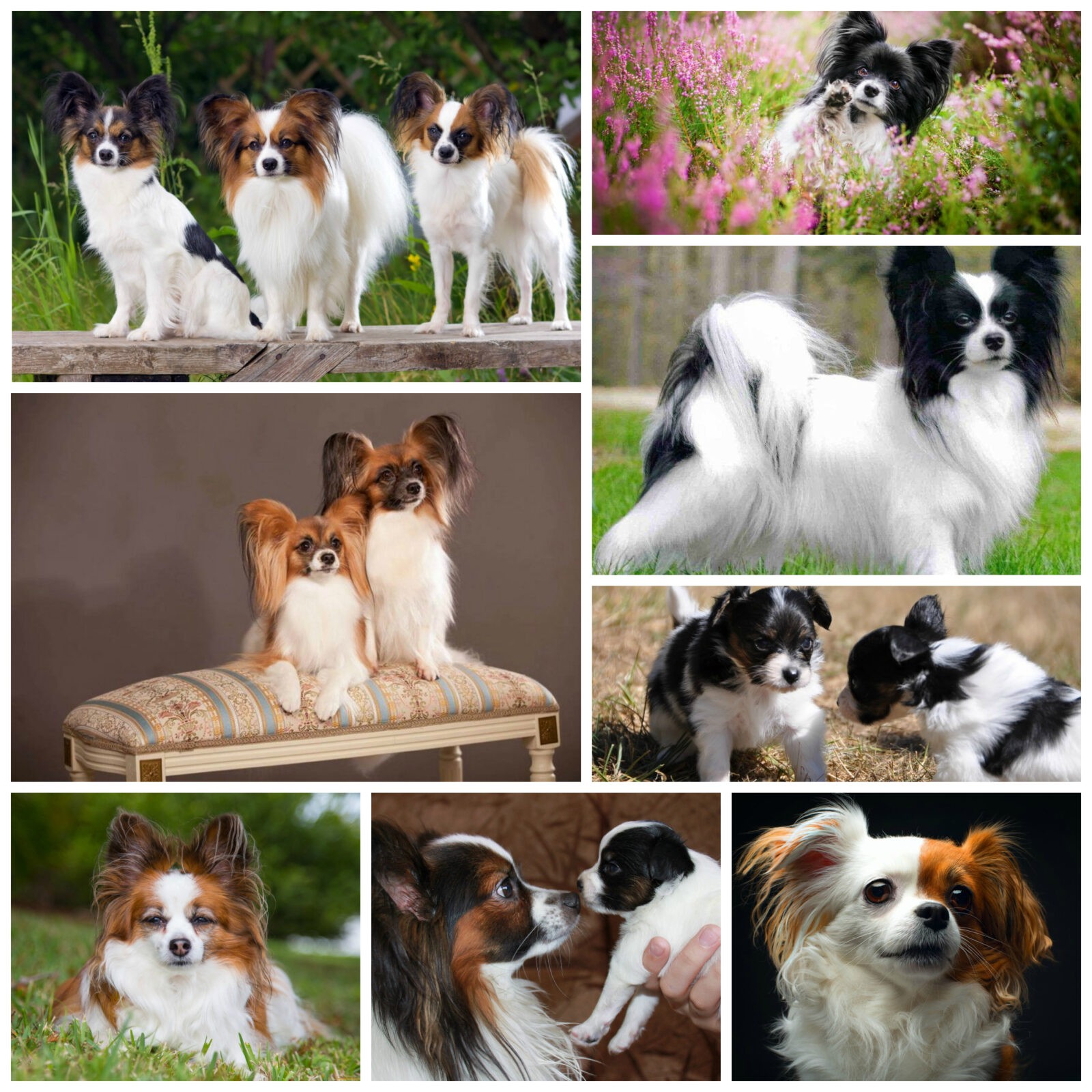
OWNER REVIEWS:
https://moyhoroshiy.ru/porody-i-otzyvy/papilion-sobaka-s-kryliiami-babochki
Brief description of the papillon breed
The name of the breed comes from the French word "papillon", which translates as "butterfly". The image of this dog comes to life in the works of famous medieval artists, whose paintings can be found in famous museums around the world.
The literal translation of the name "butterfly" is most likely due to the fact that the erect ears of the animal very much resemble a beautiful butterfly that spread its wings. There is another variety of dogs of this breed, which differs from the "butterfly" by semi-erect ears. It is noteworthy that puppies of both varieties can be born in one litter.
Many people are mistaken, believing that the small size of the dog is the key to the calm nature of the animal. If you want to have a pet that will quietly lie on your lap, for example, while watching a TV series, then Papillon will not suit you. Rather, on the contrary, the animal will flutter around the house, looking for something to do with itself. At the same time, the papillon is an excellent companion dog that will become your loyal friend for a long time.
Papillons are very vigilant and careful, especially in relation to larger relatives. Moreover, representatives of this breed are often used as sentinels dogs... They do an excellent job with this task, forgetting about their size and physical capabilities.
Animals of this breed are most suitable for active and sociable people, because the papillon adores human society. A pet's small size indicates that it is easy to care for. Despite the relatively long coat, as well as the fact that it is prone to shedding, it is quite simple to care for the animal's coat.
These wonderful dogs are also suitable for those who want to raise a pet ready to participate in various sports competitions. Dogs are also willing to participate in various competitions for the implementation of difficult commands.
By nature, papillons - owners. They are also stubborn. Therefore, it is important to start raising and socializing a puppy from the first days of his appearance in the house. The undoubted advantage of all papillons is the desire and desire to learn new things. Dogs are easy to train and always happily follow commands.
Representatives of this breed get along well with other pets, including cats... The most important thing - teach the puppy to live together from an early age.
Papillons love children. True, the friendship of a baby and a small dog can bring negative consequences. The point is that these small dogs may bite a child if they think they may be in pain. Therefore, do not leave children and your dog unattended.
Animals of this breed are centenarians. Buying such a puppy, you can be sure that he will become a faithful friend for years to come.
Papillon - extremely popular and widespread breed. At the same time, acquiring a little friend is sometimes not easy. The reason for this - a small number of puppies per litter.
basic information
| Breed name: | Papillon |
| Country of origin: | France / Belgium |
| The time of the birth of the breed: | XV century |
| Type of: | decorative and companion dogs |
| The weight: | 2 - 4.5 kg |
| Height (height at the withers): | 20 - 27 cm |
| Life Expectancy: | 13 - 17 years old |
|
ICF classification:
|
Group 9, Section 9, Number 77 |
| Puppies price: | 430 – 1250 $ |
| Most popular nicknames: | papillon nickname list |
Assessment of breed characteristics
| Adaptability
(a definition meaning how easily a dog can adapt to changes in life) |
🐶🐶🐶🐶🐶 |
| Shedding level
(Level and frequency of hair loss in the animal) |
🐶 |
| Tenderness level
(The level and amount of tenderness and affection that the dog gives in return for attention to itself) |
🐶🐶🐶🐶🐶 |
| Exercise needs
(Dog's daytime activity level) |
🐶🐶🐶🐶🐶 |
| Social need
(The required number of contacts of the dog with other animals, as well as people) |
🐶🐶🐶🐶🐶 |
| Apartment content
(A factor that determines the level of noise and other inconveniences that a dog can deliver to owners in relation to the size of the apartment to the size of the dog) |
🐶🐶🐶 |
| Grooming
(The number of bathing, brushing, and the number of professional grooming sessions required for the dog) |
🐶🐶🐶 |
| Friendliness in an unfamiliar environment
(Features of the behavior of a dog in a society with strangers or in an unfamiliar environment) |
🐶🐶🐶🐶🐶 |
| Tendency to bark
(Tendency to bark and its frequency and volume) |
🐶🐶🐶🐶🐶 |
| Health issues
(Potential health status of the dog) |
🐶🐶🐶 |
| Territoriality
(The dog's tendency to protect his home, yard, or even his owner's car) |
🐶🐶🐶🐶 |
| Friendliness to cats
(The tendency towards tolerance for cats and decreased manifestation of hunting instincts) |
🐶🐶🐶🐶🐶 |
| Intelligence
(The ability of the dog to think and solve emerging difficulties (not to be confused with learning!) |
🐶🐶🐶🐶🐶 |
| Education and training
(The level of difficulty in training the dog to perform certain actions) |
🐶🐶🐶🐶🐶 |
| Friendliness to children
(A factor that determines how friendly a dog is to children, whether he likes to play with them and tolerate some childish pranks) |
🐶 |
| Game activity
(The concept is determined by its very name, and, as a rule, is found in almost all dogs) |
🐶🐶🐶🐶🐶 |
| Observation
(The ability of a dog to detect the presence of a stranger on its territory) |
🐶🐶🐶🐶🐶 |
| Friendliness to other dogs
(The tendency of the dog to find common language with his other relatives) |
🐶🐶 |
Papillon photo:
The history of the origin of the papillon breed
The history of the papillon goes back more than one hundred years. Throughout this period, animals were reliable friends of man. That is why the company of a person is of great importance for the papillon. If you are looking for an active, fun and loyal friend, then this breed will definitely suit you.
We have already mentioned that papillons were often depicted in paintings by famous artists of the 16th century. This is evidence not only of the popularity, but also of the special status of animals. Rubens, Watteau, Boucher, Van Dyck, Rembrandt, Fragonard and other masters of the brush immortalized the Papillon in their masterpieces. In the paintings, animals, as a rule, were depicted in the arms of their affectionate mistress. These dogs were favorite pets of medieval European court ladies. Merchants transported papillons in baskets from different countries, including France, Italy, Spain.
Initially, toy spaniels, from which the breed originated, had hanging ears. At the beginning of the 17th century, at the court of Louis XIV, a puppy with erect ears was bred, which very much resembled a butterfly with outstretched wings. This is how the papillon appeared.
These dogs were also known by other names: dwarf continental spaniel, squirrel dog (due to the similarity of a dog's tail with a squirrel's tail), Belgian Toy Spaniel, etc.
In addition to the ears, the color of the dogs has also changed somewhat. Initially, toy spaniels were monochromatic, but today papillons can have different colors (more often white with spots of different colors). But in general, the papillons shown in the paintings in the famous French museum - The Louvre is practically no different from its modern congener. Today, the Papillon is ranked thirty-fifth among 155 breeds registered by the American Kennel Club.
The nature of the papillon
Maintenance and care
Despite the rather thick hair of the papillons, it is not so difficult to care for them. These dogs do not emit a characteristic odor. You need to comb them two to three times a week. Papillons are bathed as needed.
The coat of these dogs is not prone to profuse shedding, but the process of brushing itself is necessary in order for the dog's coat to look healthy and beautiful. Occasionally papillons need to be trimmed. This is easy to do even at home, without the help of professionals.
Papillon ears should be systematically checked for infection, irritation and contamination. The auricles should be cleaned with a special solution prescribed by a veterinarian, and there is no need to use a cotton swab when cleaning the ear canal.
Brushing your teeth weekly will prevent tartar and bad breath. The claws are trimmed as needed, usually on a monthly basis.
Training and training papillons
Health and disease
Some interesting facts
- Nervousness and aggression are not inherent in this breed. Avoid puppies with this disposition.
- The most important thing for papillons - a sufficient amount of attention from the person.
- Puppies this breeds very gentle. They can be harmed at an early age when playing with young children.
- Papillons are not suitable for families with very young children.
- Papillon refers to dogsespecially sensitive to anesthesia. Do not forget about this if you have to undergo surgery.
- Never purchase puppies from casual breeders. Do this with trusted dog breeders, best of all on the recommendation of friends and relatives.
Nurseries and breeders
We borrowed material from the wonderful site of our partners DOGCATFAN.COM about cats and dogs, the author dogcatfan

